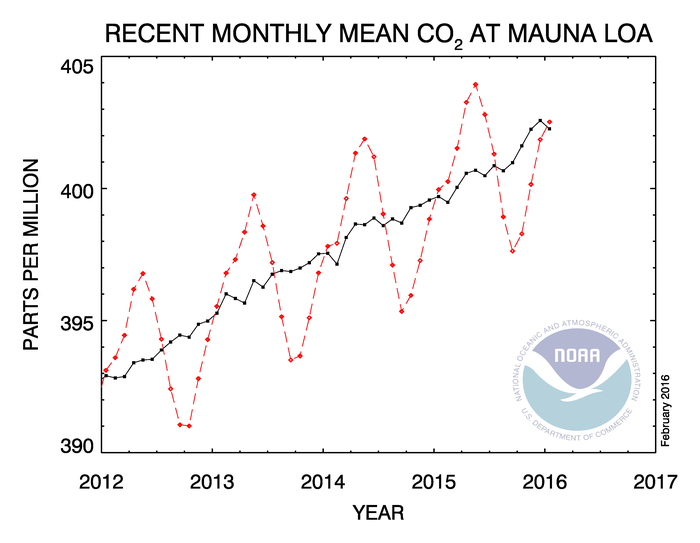CO2 has increased the past years but do you know how much ppm of CO2 is there in our atmosphere now and how much ppm of CO2 was there in the past?

One thing is for sure that it is climbing up and we are the blameworthy.

As you can guess the estimations for the CO2 in the future will be even higher and it is estimated that in 2100 it will reach a value of 800ppm (double than now).
|
December historical levels -averages |
||
|
1958 – 314.67 1959 – 315.58 1960 – 316.19 1961 – 317.01 1962 – 317.69 1963 – 318.31 1964 – 318.71 1965 – 319.42 1966 – 321.08 1967 – 321.96 1968 – 322.84 1969 – 324.11 1970 – 325.13 1971 – 326.01 1972 – 327.55 1973 – 328.64 1974 – 329.5 1975 – 330.9 1976 – 331.65 |
1977 – 333.47 1978 – 334.83 1979 – 336.78 1980 – 338.29 1981 – 339.9 1982 – 340.88 1983 – 343.07 1984 – 344.55 1985 – 345.82 1986 – 347.15 1987 – 349.18 1988 – 351.44 1989 – 352.84 1990 – 354.27 1991 – 355.07 1992 – 355.53 1993 – 356.84 1994 – 358.87 1995 – 360.61 |
1996 – 362.18 1997 – 364.33 1998 – 367.08 1999 – 368.04 2000 – 369.67 2001 – 371.18 2002 – 373.71 2003 – 375.93 2004 – 377.45 2005 – 379.92 2006 – 381.79 2007 – 383.89 2008 – 385.56 2009 – 387.31 2010 – 389.73 2011 – 391.83 2012 – 394.28 2013 – 396.81 2014 – 398.85 2015 – 401.85 |
When I was born in 1984 I was breathing 344ppm of CO2, now my body is breading 403ppm of CO2 (59ppm more). CO2 isn’t a direct threat for our health but it’s a direct threat for our planet and as a consequence an indirect threat to us.
Are we capable stopping the increase of CO2, What do you think?






